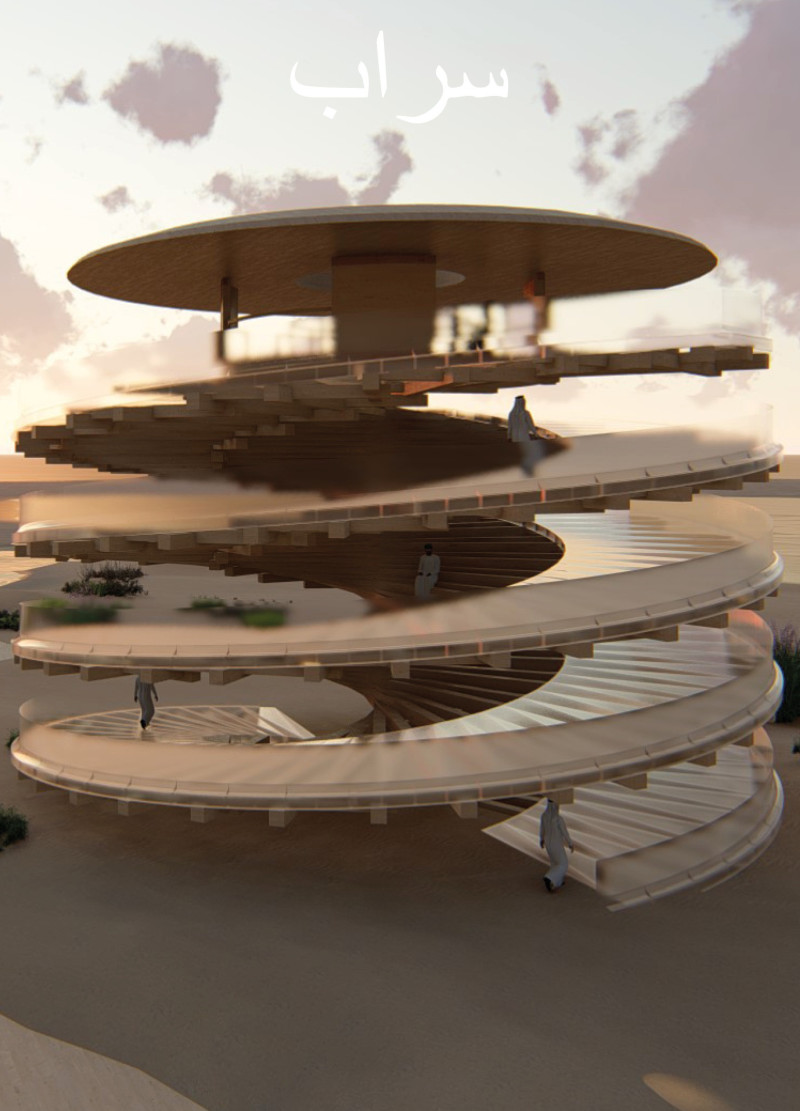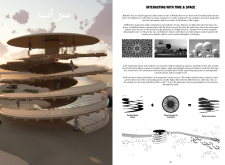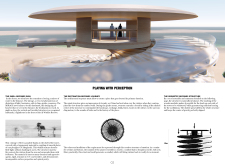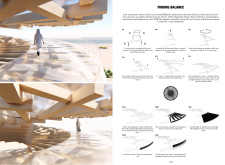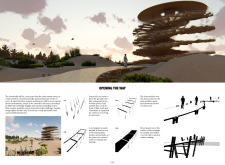5 key facts about this project
MIRAGE is situated in the Al Wathba Reserve, designed to enhance the experience of visitors while fostering a connection with the surrounding nature. It draws on traditional Arabic architecture, using geometric forms that reflect the cultural context. The spiraling structure invites exploration and interaction, encouraging visitors to observe the local birdlife.
Design Concept and Aesthetics
The tower's shape resembles a dome when viewed from a distance, connecting it to the region’s architectural traditions. As one approaches, the spiral form rises from the ground, inviting curiosity and engagement. This pathway not only serves as a means to reach the observation platform but also offers dynamic views of the landscape and its flora and fauna. The design encourages a sense of discovery, as visitors move through the space.
Structural Composition
MIRAGE achieves its stability through a system of wooden assemblies that allow for intricate shapes while ensuring structural soundness. The lightweight appearance contributes to a sense of floating above the desert floor. Using wood in construction assists in maintaining balance and elegance in the overall design. Each component plays a role in creating a harmonious interaction with the environment.
Material Selection
The exterior of MIRAGE features smooth cast plexiglass, specifically CN AltuglasⓇ. This material is important for creating the mirage effect, providing transparency while reducing glare. It allows visitors an unobstructed view of the landscape while also protecting them from intense sunlight. The choice of materials supports both the functionality and aesthetic of the tower, blending it into the natural setting.
Visiting Experience
An observation platform at the top provides a full view of the surrounding area, enriching the experience for visitors. The spiral path includes shaded spots for resting, inviting people to stop and reflect on the beauty and significance of the reserve. This thoughtful design connects visitors not only to the architecture but also to the natural environment, making it an engaging place to visit.
Along the façade, geometric patterns echo traditional motifs, adding cultural depth while the spiraling form works with the landscape's contours. This relationship fosters a dialogue between the environment and the design, enriching the overall experience for visitors.


